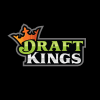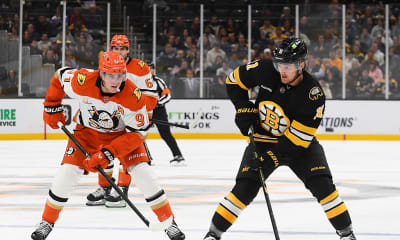Your Guide to the NHL 2025/26: Central Division

Current bets
The division contains everything from superstars like Nathan MacKinnon, Cale Makar, and Mikko Rantanen to questions about whether Kirill Kaprizov will even stay in Minnesota. Dallas is hunting redemption after three straight exits in the Conference Final, Colorado is hoping for a healthy Landeskog, St. Louis looks clearly underrated, and Winnipeg could be headed for regression. At the same time, the hype around the Utah Mammoth is growing, while Nashville and Chicago try to avoid getting stuck at the bottom.
Read my guide to:
Below you’ll find answers to the most common questions ahead of the season – from when the puck drops to who’s favored to lift the Cup.
How have your betting tips performed in previous seasons?
I have a long track record of documented betting records that have always been public and accessible. That will also be the case this year. Last season my focus was more on a private group, which meant fewer plays were posted publicly on social media. But now I’m back with tips as before – mainly high-limit bets on game days, occasionally spiced up with a prop when the right spot comes along.
- NHL High Limit (2021/22–2023/24): 1,335 bets, +7.32% ROI
When does the NHL 2025/26 season start and end?
The 2025/26 NHL season begins on October 7, 2025, and the regular season ends on April 16, 2026. After that, the Stanley Cup Playoffs take over, running as usual well into June.
In the middle of the season, Olympic hockey in Milan 2026 will be played, scheduled for February 8–22, 2026. The NHL will make an official break during these weeks, meaning league play pauses while the world’s best players suit up for their national teams. This marks the first time since Sochi 2014 that NHL players participate in a Winter Olympics, making the season extra special—with an intense schedule before the break and a packed finish afterward.
How do divisions and conferences work?
The NHL is divided into two conferences: the Eastern Conference and the Western Conference. Each conference is further split into two divisions.
Eastern Conference
Atlantic Division
Metropolitan Division
Western Conference
Central Division
Pacific Division
Each division contains eight teams, meaning both the Eastern and Western Conference consist of 16 teams each.
When it comes to the playoffs, the top three teams in each division qualify automatically. In addition, there are two so-called wild card spots in each conference. These go to the two teams with the highest number of points in the regular season that did not already qualify via a top-three finish in their division.
This means the distribution is not always exactly even between the divisions. Sometimes one division can send as many as five teams to the playoffs while the other only gets three. This system ensures that the best teams in the conference as a whole are rewarded—not just the ones within a particular division.
Who won the Stanley Cup last season?
The Florida Panthers were crowned champions in 2025 after defeating the Edmonton Oilers 4–2 in the Final series. In the decisive Game 6, the Panthers cruised to a 5–1 victory in front of their home crowd.
Sam Bennett was named Playoff MVP after a spectacular postseason with 15 goals, while Sam Reinhart delivered a historic performance in the Final by scoring four goals in a single game—something that hadn’t happened in a Stanley Cup Final since 1957.
It was the Panthers’ second straight title and their third consecutive Stanley Cup Final appearance.
Who are the favorites this season?
Heading into this season, the Florida Panthers are once again the favorites according to the betting odds—and it’s hard to argue against that. The team has reached three straight Stanley Cup Finals, winning two of them, and still has a core of players who know exactly what it takes to go all the way.
But the competition is fierce. The Edmonton Oilers, Carolina Hurricanes, Colorado Avalanche, Dallas Stars, Vegas Golden Knights, and Tampa Bay Lightning are all legitimate contenders capable of challenging the Panthers for the title.
1.
 Dallas Stars – Time to take the final step?
Dallas Stars – Time to take the final step?
In recent years, the Dallas Stars have been one of the league’s best teams, coming close time and again to reaching the Stanley Cup Final. Three straight seasons have ended in the Conference Final, most recently in painful fashion against Edmonton, where the series slipped away with four straight losses after an initial win. At the same time, it says a lot about the team’s stability that they’ve been there three seasons in a row. The question is whether this edition can take that final step.
Up front, few teams can match the Stars. Roope Hintz, Jason Robertson, and Mikko Rantanen form a top line that can dominate night after night. Behind them, Wyatt Johnston keeps taking steps, Tyler Seguin and Matt Duchene provide flexibility, and Jamie Benn can still contribute in the right role. Together, that creates a depth that allows Dallas to win even when the stars aren’t clicking. The losses of Mason Marchment, Mikael Granlund, and Evgenii Dadonov thin out the secondary scoring somewhat, and this is where GM Jim Nill may need to get creative during the season. At the same time, the door opens for Mavrik Bourque to step up as a cost-effective value option, and Oskar Bäck is likely to get more real NHL minutes. The feeling, though, is that Dallas will handle it fairly smoothly.
But maybe it’s on the blue line that the Stars have become most exciting. Miro Heiskanen has long been the team’s hub – one of the NHL’s most complete defensemen. But now Thomas Harley is knocking loudly. In the preseason he even got a chance to test the role as the first option on the power play, a spot that otherwise belongs to Heiskanen. Harley has grown into a giant who can handle any situation on the ice – steady in his own zone, strong in transition, and with an offensive drive that makes him a constant threat. And even if he doesn’t take over the PP1 spot from Heiskanen, it shows just how luxurious a position Dallas is in. How many teams can boast two blueliners who can both be considered potential number ones? Is Heiskanen even clearly better than Harley anymore? That’s a question without an obvious answer.
But now Thomas Harley is knocking loudly.
The goaltending is stable. Jake Oettinger has shown he can stand on his head when it matters, but needs to find more consistency over the full season. Casey DeSmith provides enough relief for Dallas to get through the regular season without overload. With a slightly tighter defense in front of him – something new coach Glen Gulutzan wants to implement – Oettinger could well take that final step to become one of the league’s true game-breaking goalies.
The cap situation makes the “now or never” feeling stronger each year. Big raises loom for players like Robertson and Harley, which creates pressure to maximize this version of the roster. At the same time, there’s internal upside that can carry them far – Johnston can take another step, Bourque can break out, and Rantanen will have time to fully integrate into the system.
The Stars enter the season as a clear contender. They have top-end talent, experience, and a goalie who can steal games. But above all, they have something few others even come close to – two defensemen in Heiskanen and Harley who can both be considered number ones. The team is definitely built to go deep again; now we’ll see if this is the year they take that last step and land in a Stanley Cup Final. The ingredients are undoubtedly there.
2.
 Colorado Avalanche – Landeskog’s return could decide everything
Colorado Avalanche – Landeskog’s return could decide everything
The Colorado Avalanche enter another season with high expectations and one of the league’s most complete rosters on paper. The team is led, as usual, by Nathan MacKinnon and Cale Makar – two players who not only belong to the world elite but who could also enter the race for the league’s biggest individual awards. For years, MacKinnon has been viewed as a close second to Connor McDavid, but that line is razor-thin – if it even exists anymore. The hockey MacKinnon has played the last two seasons has been something special. Makar, already a Norris winner, has the potential to crack 100 points – something only six defensemen in NHL history have achieved.
The big news in the roster, though, is Gabriel Landeskog’s comeback. After three full seasons on the sidelines, he stepped into the playoffs this spring and looked further along than many dared hope. If the Avalanche get their captain healthy for a full season, it’s like adding a star – Landeskog brings physical heft, two-way play, and the leadership that’s been missing since the 2022 Cup triumph. His return could be the single biggest difference between being a strong playoff team and a true title threat.
The big news in the roster, though, is Gabriel Landeskog’s comeback.
The loss of Mikko Rantanen is obviously a blow, but Colorado has plugged the gap with Martin Nečas and Brock Nelson. Nečas already showed in the spring that he has chemistry with MacKinnon, and Nelson gives the team a second-line center with a proven scoring touch. Add Artturi Lehkonen’s work rate and Valeri Nichushkin’s heavy style and there’s still a top six that can contend to be the league’s best.
On defense, Makar and Devon Toews remain the NHL’s best pair, which in itself gives Colorado enormous security. The challenge has been stability further down the lineup, and that’s why veteran Brent Burns, who was acquired, could be a key piece. He adds experience, puck-moving skill, and relief for Makar. Samuel Girard and Josh Manson are both useful when healthy, but as with several others on the roster, injury history is a concern.
The goaltending, which previously felt uncertain, looked much better in the spring. Mackenzie Blackwood played at a level reminiscent of his best years in New Jersey, and if he maintains that level, the Avalanche are solid in net.
As so often, the question marks revolve around injuries. Will Landeskog hold up? Will Lehkonen remain injury-prone? Nichushkin’s absences at critical times have made headlines before – can he stay on track this season? It makes Colorado, despite an extremely strong top end, not entirely simple to rank. If they get a healthy season from their stars, they’re favorites to win the Central and go deep in the playoffs. But with recurring injury issues, they risk ending up a step behind the Dallas Stars, whose roster feels a bit more stable and less fragile.
In summary, it’s perfectly reasonable to classify the Avalanche as the Central Division’s strongest team on paper and a clear Cup contender – but the road back to the Stanley Cup Final runs through a healthy roster and a Landeskog who holds up all the way.
3.
 St. Louis Blues – Robert Thomas carries the flag for the underrated Blues!
St. Louis Blues – Robert Thomas carries the flag for the underrated Blues!
The St. Louis Blues underwent a total transformation when Jim Montgomery took over as head coach last season. From a team that felt toothless and scattered under Drew Bannister, they suddenly became disciplined, hard to play against, and with an offense that actually bore fruit. Montgomery has a documented track record of elevating his teams, and the improvement was obvious here as well – especially in how he got the most out of players who had previously seemed locked in their roles.
The biggest reason for optimism remains Robert Thomas. He already has two straight seasons at over a point per game, plays top-class two-way hockey, and has hockey sense among the best in the world. Creative, confident with the puck, and able to dictate the tempo in a way very few can. To me, he’s already a franchise player and a top-10 center in the NHL – even if that label isn’t widely accepted yet.
To me, he’s already a franchise player and a top-10 center in the NHL – even if that label isn’t widely accepted yet.
Behind Thomas are more pieces that make the Blues’ offense highly interesting. Jordan Kyrou is established as one of the league’s fastest skaters and the team’s leading goal-scorer, while Pavel Buchnevich – despite a dip last year – still produced over 60 points and has plenty of hockey in him. He’s a player who’s often underrated but can be a true offensive catalyst in the right environment. Together with the youngsters coming in, that gives the Blues a broader and more dynamic attack than they’ve had in a long time.
Dylan Holloway had a major breakout under Montgomery and is exactly the kind of two-way forward who gives a team balance – fast, hard-working, skilled both ways, and capable in his own zone. His arrival gave the Blues a dimension they previously lacked, and snatching him from the Oilers was a masterstroke. Rookie Jimmy Snuggerud got a valuable taste of the NHL and feels ready for more, while Dalibor Dvorsky has a strong AHL season behind him and could be a wild card if he seizes the opportunity. Add improved center depth with Pius Suter and Nick Bjugstad, and the picture becomes even more promising.
There are still some questions on the blue line. Colton Parayko is a defensive pillar but hardly a fully fledged number-one defenseman, and the team still lacks that offensive catalyst from the back end that many other playoff teams can lean on. But with Cam Fowler as his partner, Parayko found a comfort level that lifted the entire defense, and Philip Broberg took big steps forward. If Broberg continues on that path, the blue line could be much better than many expect.
The goaltending tandem of Jordan Binnington and Joel Hofer may not be spectacular, but it’s stable. Above all, we saw a very different sense of security defensively after Montgomery structured the play, which made life easier for the goalies. If Binnington finds more consistency and Hofer takes another step, the Blues could actually have a high-end tandem.
All in all, I think the St. Louis Blues are underrated. They may not be a lock for the playoffs – the competition in the West is brutal – but the upside here is greater than many want to admit. With Thomas as a top-10 center, Kyrou as an explosive scorer, a potential bounce-back from Buchnevich, and a number of young players who’ve already begun to take steps under Montgomery, everything is in place for the Blues to surprise in a big way. Keeping the 105-point pace (since Montgomery took over) from last year may be unrealistic, but something shifted after the coaching change, and for the first time in years, the Blues feel truly exciting. Placing them ahead of the Jets and Wild is a statement versus the market’s valuation – but I see more upside here than with their competitors.
4.
 Winnipeg Jets – From Presidents’ Trophy to setback?
Winnipeg Jets – From Presidents’ Trophy to setback?
The Winnipeg Jets had a brilliant season last year and took home the Presidents’ Trophy after a regular season in which they repeatedly showed they could win in different ways. The key was, of course, Connor Hellebuyck, who confirmed his status as the best goalie in the world and won games almost single-handedly. But the Jets were far from a one-man show – the top line of Mark Scheifele, Kyle Connor, and Gabriel Vilardi dominated their minutes and was one of the league’s most effective offensive units.
Despite this, I’m ranking the Jets lower heading into this season, mainly because of the loss of Nikolaj Ehlers. He’s long been one of the NHL’s most underrated players and gave Winnipeg an offensive breadth that made them hard to stop. Replacing him with Gustav Nyquist – who can still contribute but whose best years are behind him – is a significant downgrade. And even though the return of Jonathan Toews is a fantastic story for Manitoba, it’s hard to see him stepping in to fill the second-line center role. After a long absence from hockey and with age against him, it seems more realistic that he becomes a steady fourth-line center than the two-way force he once was.
That doesn’t mean the Jets aren’t a strong team. Hellebuyck can carry them through rough patches, Josh Morrissey remains an offensive driver from the blue line, and the center depth with Scheifele, Toews, and Adam Lowry could be very tough to match at its best. Cole Perfetti is also a player to watch – he looked noticeably quicker at the end of last season and now gets more ice time and power-play responsibility. If he takes steps similar to Dylan Samberg’s last year, Ehlers’ loss becomes easier to handle.
There’s also the question of whether Winnipeg can raise their physical level. The playoff series against St. Louis in the spring was a wake-up call – the Jets were the better team on paper but struggled mightily when the Blues ramped up the physicality, won the net-front battles, and pushed the series to seven games.
Finally, there’s the uncertainty around Kyle Connor’s future. He’s entering the final year of his contract and will be expensive to re-sign – and although he’s a point machine, his two-way game has often been questioned. A contract year can bring extra motivation, but the question is how the club balances his offensive star status with their long-term cap plans.
In summary, the Jets are still a very good team. With Hellebuyck in net, a dominant top line, and a solid structure, they won’t fall out of the playoff race. But without Ehlers’ offensive contributions, with uncertainty around Toews’ role and Connor’s contract status, it’s hard to see them repeating last year’s Presidents’ Trophy success. Ranking them behind a team like the St. Louis Blues might be questioned, but where I see enormous upside with the Blues, I see more risk of regression with the Jets this season.
5.
 Minnesota Wild – Everything revolves around Kaprizov’s future
Minnesota Wild – Everything revolves around Kaprizov’s future
The Minnesota Wild remain a team that revolves around Kirill Kaprizov – both on and off the ice. He’s the franchise’s first true superstar and the one who has carried the team into playoff status in recent years. But with just ten months left on his contract, after already turning down an eight-year, $128 million deal, the uncertainty is enormous. Wild owner Craig Leipold, who usually likes to talk about anything, chose to stay completely silent on Kaprizov when the question came up during the preseason. That says a lot about how sensitive the situation has become. For fans, the worry is palpable: what happens if the Wild can’t keep their biggest star?
For fans, the worry is palpable: what happens if the Wild can’t keep their biggest star?
Kaprizov is one of the NHL’s most reliable goal scorers, with three straight 40-goal seasons before last year (25 goals in 41 games last season), but when so much of the offense rests on one player, the team becomes vulnerable. Last year showed that clearly: when Kaprizov missed 41 games, the Wild quickly lost their punch. Behind him, the depth works but doesn’t scare anyone – Matt Boldy is the next big offensive force, Joel Eriksson Ek continues to be one of the league’s most underrated two-way centers, and Marco Rossi needs to keep progressing to spread the scoring. New signing Vladimir Tarasenko can add goals and experience, but he’s no longer a player who changes games on his own.
What could be a real injection is defensive prospect Zeev Buium. He’s expected to step directly into the top four and could even take over as the power-play quarterback. That’s an area where Minnesota lost steam – from top ten in the league to 20th last season – and Buium’s offensive vision could be the key to improving special teams. Brock Faber, who broke out big as a rookie, saw his point production fall back sharply last season. If both Faber and Buium take steps forward, and veteran Jared Spurgeon stays healthy, there are foundations for a stable blue line.
In goal, Filip Gustavsson and Jesper Wallstedt will share the load. Gustavsson has shown high peaks but also a worrying inconsistency at times. Wallstedt, one of the world’s most promising goalies, is waiting for his big breakthrough. If he takes that next step, the goaltending could become the team’s greatest asset.
The Wild are a team with many “ifs.” If Kaprizov stays, if Buium blossoms, if Wallstedt breaks out. But they’re also already good enough to be in the Central Division playoff race. The question is whether they have enough around their superstar to go beyond the first round – and what happens to the entire organization if Kaprizov really does choose to leave next summer.
6. Utah Mammoth – Talented top end, but is the depth enough?
The hype around the Utah Mammoth grows with each season, and expectations are higher than ever heading into 2025/26. The club has built a young core with enormous potential in Clayton Keller, Dylan Guenther, and Logan Cooley – three players who can already measure up to many other top lines in the West. Add new signing JJ Peterka, a speedy offensive force who can add more punch. At the same time, there’s been a cost – the roster depth is weaker than last year, and the departures of Matias Maccelli and Michael Kesselring are felt in both the offense and on the blue line.
On paper, Utah’s top six is stronger than ever. Keller comes off a 90-point season and continues to develop into one of the league’s most reliable offensive wingers, while Guenther has one of the league’s best shots and Cooley is rapidly developing into a true first-line center. With Peterka in the mix, there’s plenty of creativity and speed up front. But behind the stars, it’s thinner. The third and fourth lines don’t match many rivals, which means Utah needs a lot of production from its top players to sustain a playoff push.
On defense, a lot rests on Mikhail Sergachev as the clear number one. Behind him, John Marino needs to stabilize a top-four role and deliver steady minutes. Sean Durzi provides offensive push but thrives best with a defensively reliable partner or more sheltered usage. Here, 21-year-old Maveric Lamoureux could be the wild card – big, mobile, and with future top-four potential, but still unproven at this level.
In goal is Karel Vejmelka, who had his best season to date last year and proved he can be a stable number one. The problem is sustainability – he carried an enormous workload down the stretch, and without a trustworthy backup that risks becoming untenable. Vitek Vanecek is intended as relief, but his inconsistency raises questions.
In summary, Utah has taken steps forward and looks more exciting than ever. With Keller, Cooley, and Guenther as the leading stars and Peterka as a new injection, there’s top-end talent to contend. The question is whether the depth is enough, or if the team is still a year or two away from being a real force in the West.
7.
 Nashville Predators – Was last year a fluke or the beginning of the end?
Nashville Predators – Was last year a fluke or the beginning of the end?
Nashville entered last season with a roster that looked competitive on paper. Steven Stamkos, Jonathan Marchessault, and several experienced names were brought in to give the Predators a new identity, but the result was the opposite. The team collapsed completely and finished among the league’s three worst. It was a season where everything that could go wrong did – from poor finishing to shaky goaltending from the otherwise dependable Juuse Saros.
The question heading into this season is simple but crucial: was last year an unfortunate anomaly, or a sign that the Predators are simply a team in decline? Saros is still the team’s biggest hope in net, but he’s gone from being one of the league’s best goalies to being questioned after two straight seasons of downward-trending numbers. If he doesn’t regain his top form, the Predators will struggle to climb, especially since backup Justus Annunen hasn’t convinced.
On the blue line, everything rests on Roman Josi. He remains an elite defenseman with the ability to drive play, but injuries and age raise question marks. Previous acquisitions like Brady Skjei and Nicolas Hague were meant to ease the load, but neither they nor others have shown they can log heavy minutes in a way that truly helps Josi. The defense therefore risks being an Achilles’ heel again.
Up front, much comes down to Filip Forsberg, whose goal-scoring has declined for several years. If he can find his form, it would be a lift, but the roster lacks dynamic playmakers to maximize him and Stamkos. Marchessault, O’Reilly, and Michael Bunting add depth and experience, but the offense looks more slow and aging than fast and dangerous. Younger players like Luke Evangelista or Fedor Svechkov taking steps forward is almost a must if Nashville is to have any offensive edge.
What speaks in the Predators’ favor is that it can hardly go as badly as last year. Both finishing and goaltending collapsed in a way that almost always regresses to the mean over time. When both shooting percentage and save percentage slump simultaneously, it usually has more to do with bad luck than permanent level. If they simply get normal conversion up front and Saros back to a stable level in net, Nashville can at least avoid the basement. But fighting for a playoff spot feels difficult – the roster looks more like a collection of veterans than a team with a clear direction.
8.
 Chicago Blackhawks – Bedard alone in continued darkness
Chicago Blackhawks – Bedard alone in continued darkness
The Chicago Blackhawks enter yet another season as one of the league’s weakest teams. Despite already having one of the NHL’s biggest talents in Connor Bedard, the roster around him has barely improved. Last season was a disappointment where Bedard showed flashes of his potential but didn’t quite take that historic “year-two leap” that other generational stars have made before him. Judging him too harshly would be unfair – the fact that Andre Burakovsky, a player who has struggled to stay healthy and is far from his peak, is the biggest reinforcement says a lot about the situation.
practically all the responsibility rests on his shoulders on a team lacking breadth, depth, and established star power around him
Up front, Bedard carries the heavy load, but he’s not entirely alone. Frank Nazar enters his first full NHL season and is seen as a future top-six forward. Ryan Donato has been extended and functions as a capable complementary piece, but the other veterans – Teuvo Teräväinen, Ilya Mikheyev, and Tyler Bertuzzi – are more role players than true difference-makers. The result is that players who really belong lower in the hierarchy are forced into higher roles, exposing just how thin the offense is.
The defense may be the biggest Achilles’ heel. Seth Jones has left, and with him the only defenseman who could shoulder a top-pair role. What remains is a young group where Alex Vlasic is expected to step up as the number one, but the real future hope lies in Sam Rinzel and Artyom Levshunov. Rinzel got a taste of the NHL at the end of last season and is a strong-skating, two-way defenseman who could even see power-play time. Levshunov has even higher potential but is only 19 and hardly ready to take on a top role right away. Without a stable top four, the Hawks’ defensemen are in for a rough ride – and the question is whether there won’t be far too much “learning on the job” against the NHL’s best forwards.
In goal, Spencer Knight has a chance to rebuild his career. He showed promise in Florida before the competition with Sergei Bobrovsky became too tough, and his first games in Chicago suggested he could grow into a reliable No. 1. But with such a weak defense in front of him, the task is brutal – even a solid season from Knight risks being drowned in numbers colored by a team constantly on its heels.
So Chicago remains stuck at the bottom. There is a vision – Bedard and Nazar leading the way up front, Rinzel and Levshunov on the blue line, and Knight in goal – but the road there is long. This season isn’t about winning, but about taking small steps forward. If Bedard can keep developing despite the lack of support, if Nazar takes the next step, and if at least one of the young defensemen shows he can be a building block, fans can at least feel the drawn-out reconstruction is moving forward. But there’s a real risk that another tough season with many losses will wear down patience – and that the Blackhawks remain the league’s most toothless team.
Projected Standings
- Dallas Stars
- Colorado Avalanche
- St. Louis Blues
- Winnipeg Jets
- Minnesota Wild
- Utah Mammoth
- Nashville Predators
- Chicago Blackhawks
Betting Picks
- St. Louis Blues Over 92.5 points @ +102 FanDuel
The Blues looked like a new team after Jim Montgomery took over last season. Robert Thomas is, at this point, one of – if not the – most undervalued players in the league. Add Kyrou, Buchnevich, and a number of young talents raising the offense, while the defense stabilized after the coaching change. There’s more upside here than the market seems to think – 93 points are well within reach.
- Thomas Harley over 59,5 points @ -100 FanDuel
Harley looks set for even more responsibility on Dallas’ potent power play and has already established himself as a two-way pillar with offensive upside. He’s a player on a clear upward trajectory, and if the market offers goal or point props around him, it’s definitely worth a look.
Current bets

+21. Play responsibly.
Best sports bonuses of the week















